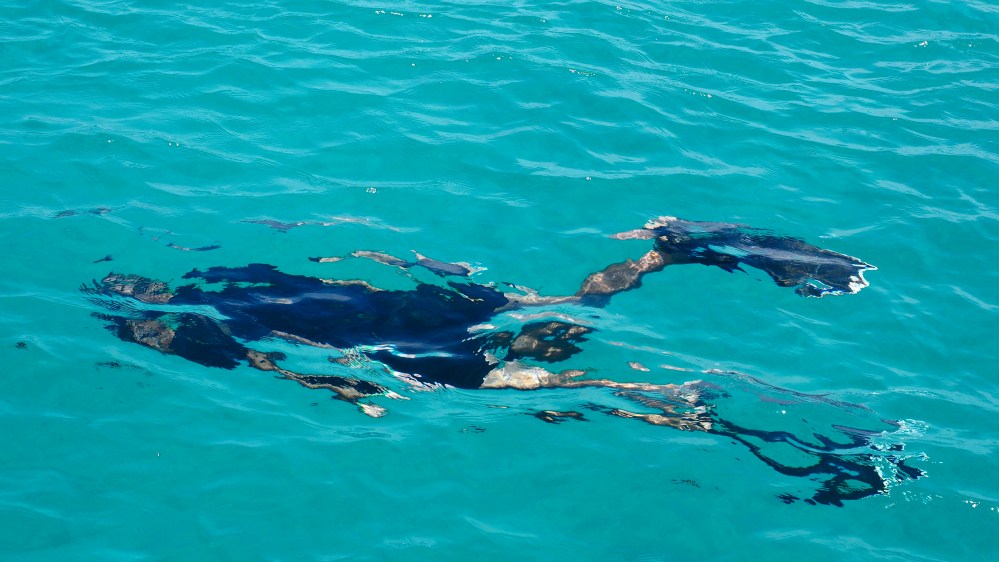Thursday, 28 May 2015
Caleta Buena is a small inlet about 8km from Playa Girón. It’s hard to believe that it was envisaged as one of the landing sites for the 1961 invasion of Cuba, but so says Wikipedia. We rode there on the bicycles provided by our hosts. It was an easy, level ride, but there was a curious illusion that made the road seem all the way uphill on the way there and all the way uphill on the way back. The road was bordered by the sea on one side and the Zapata swamp on the other. Tall trees provided welcome shade, and crabs scuttled across the road in front of us.
We arrived at Caleta Buena well before the official opening time, so we locked the bikes up near the entrance (inside the gate, to avoid Baracoa-style scams) and checked out the terrain.
The Caleta is a natural inlet in the limestone reef with a narrow opening to the sea. The effect is that of a deep, natural aquarium. The water is crystal clear, although there is a curious shimmering where the freshwater draining from the land meets the seawater. This unusual phenomenon has led to a unique mix of marine life for which the site is renowned.
The cabañas offered little shade as they did not have any palm leaf thatch on top. (We later surmised that this was the effect of recent storm damage). We were therefore careful to put on lots of sunblock. We chose a cabaña right at the very end of a walkway that ended in a ladder down to the water.
Our first dive was cut short when I accidentally brushed a sea urchin as I swam alongside one of the sheer walls of the caleta. About a dozen needle-like spines penetrated my palm and fingers and instantaneously broke off. The pain was completely disproportionate to the injury. Susie and I got out of the water and watched the indigo dye spread from the tiny spines into my flesh. We sought some advice from a first aid officer who reassured us that it would be impossible to dig out the spines, and that the pain would subside and the spines would work their way out by the time the tide changed. If they didn’t, we were told that the best thing to do would be to hit my hand with a wooden mallet to break up the spines.
I had a beer to ease the pain, and tried not to think about the mallet scenario. Then we went back to snorkelling.

We were in and out of the water for the next few hours. The caleta was endlessly fascinating and the calmness of the water made it easy to dive and explore underwater nooks and crannies (whilst avoiding the dreaded sea urchins!) We had beer and Cuba Libres for lunch, although they referred to the famous cocktail by a different name, which seem to reflect a lack of revolutionary consciousness. Susie compounded the ideological issue by eating an Eskimo Pie.
At about 3:45 p.m. we decided to retrace our ride back to Playa Girón. There were fewer crabs venturing out onto the bitumen, but we saw a huge turkey vulture (aura tiñosa) tucking into an enormous fish head that someone had discarded on the road.
On the way back through town we bought some drinking water at the local bar. Back at the casa we sat down to a meal of lobster with far too many accompaniments (even though our host, Lidia, had scaled back the size of the servings at our request). It was amazing to tuck into a huge lobster steak, as this is a delicacy that we would not dream of ordering at a restaurant back home in Sydney.
During dinner, we asked Lidia why there were so many ruined cabins next to the hotel in town. She told us that it was the result of a storm surge following Hurricane Michel in 2001. There was not enough money around to repair the damaged cabins, although the hotel itself had been repaired.
